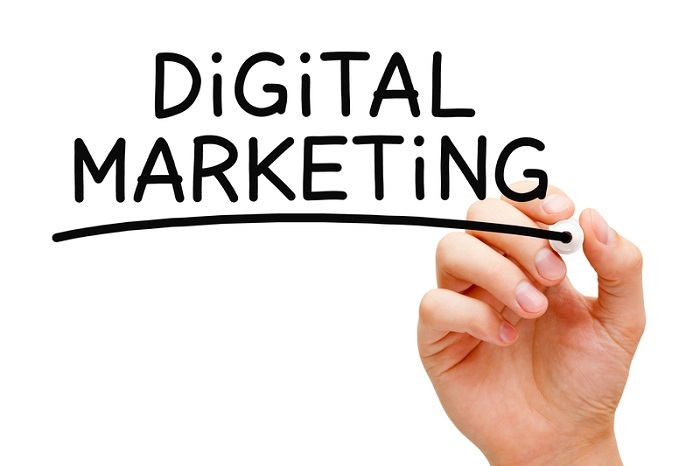
 Data Structure
Data Structure Networking
Networking RDBMS
RDBMS Operating System
Operating System Java
Java MS Excel
MS Excel iOS
iOS HTML
HTML CSS
CSS Android
Android Python
Python C Programming
C Programming C++
C++ C#
C# MongoDB
MongoDB MySQL
MySQL Javascript
Javascript PHP
PHP
- Selected Reading
- UPSC IAS Exams Notes
- Developer's Best Practices
- Questions and Answers
- Effective Resume Writing
- HR Interview Questions
- Computer Glossary
- Who is Who
Digital Marketing Plan Template: Full Guide
One of the most common factors that businesses consider when it comes to marketing is digital marketing. It's an inexpensive way to reach their ideal customers. Traditional marketing can be very expensive, especially if you want to reach the masses. With digital marketing, you can clearly understand how your campaign is performing and make adjustments based on the results.

It can take a lot of time to create a marketing plan, but it's worth it. A good digital marketing plan is very important to ensure your business is successful. A good template is also very important to help you get started. Marketing can be expensive, and it's important to plan ahead and use the resources wisely. Doing so will allow you to scale your efforts and have a high ROI. One of the most important steps you should take is to create a marketing plan that clearly shows how you want to promote your business.
What is a digital marketing plan?
A digital marketing plan is a vital part of any company's strategy to promote its brand or product online. It can be used to map out a strategy for various initiatives such as website optimization and content marketing. It also provides a framework for managing multiple marketing channels and budgets. The basic purpose of a plan is to describe how you intend to implement marketing. It also provides a timeline for the plan's execution.
A marketing plan is a type of report that describes your company's goals for the next year. It provides a comprehensive overview of your marketing efforts, and lets you know where to focus your efforts. It's very important for small and medium-sized businesses (SMBs).
Why do you need a digital marketing plan?
The need for a digital marketing plan is simple, it prepares you for the coming events and helps improve ROI. Below, we have mentioned some reasons that describe the need for a digital plan.
Create Better Goals
Having specific goals can help you plan your way to achieving them. While having vague objectives like "I want to grow my business" can be very different from having actual KPIs that can help you identify what will get you there, having goals that are specific, measurable, and achievable can be very helpful.
Consistency
One of the most important factors that you can consider when it comes to marketing is consistency. Having a good strategy and consistent activities can help you reach your goals and build a stronger following. One of the most effective ways to achieve this is by posting 1 post every day on your social media platforms.
How to create a digital marketing plan?
There are some steps that need to be followed when making a digital marketing plan. Follow the below-given steps to make a good digital marketing plan.
Analyze
Before you start creating a marketing plan, it's important that you identify your competitors. Having a clear understanding of who your competitors are will allow you to develop effective promotional strategies. For instance, on social media, your biggest competitor might be different from the one with the best SEO technique.
Take a look at your competition and use the SWOT analysis tool to identify strengths, weaknesses, threats, and opportunities. This is a systematic way to analyze your competitors' performance.
Create an Executive Summary
It's important to create an executive summary at the beginning of a marketing plan, as it usually takes a long time to develop a strategy and implement it. This should include all of the major elements of the plan, such as your budget, marketing channels, and KPIs. It should also tell your story and provide a quick overview of the entire plan.
Research your Target Audience
Your target audience is the group of people that you want to reach in order to promote your product or service. This is the section of people that you want to reach in the most effective way possible.
You can determine who your target audience is by figuring out what kinds of people your product or service caters to. You can then use a SWOT analysis to identify areas of focus for your marketing efforts. You can also check out the websites and social media channels of your competitors.
Set your Goals and KPIs
Before you start setting goals, make sure that you have a clear understanding of what you want to achieve. For instance, what do you want to achieve in the next quarter, and what would you like to achieve in five years? Break them down into small steps so that they can be easily tracked and allocated. This will also help you establish a clear timeline and keep track of your expenses.
Marketing Budget
Your marketing budget is based on your business's lifecycle stage. For instance, if you're a startup, you might allocate more toward gaining market share and developing new customers than an established brand. However, an established brand might allocate more toward retaining and improving its reputation. Your niche also determines how much you can spend on marketing. For instance, if you're in a competitive industry, you might need to find ways to lower your customer acquisition cost.
Marketing Channels
After you have your core messages, it's time to choose the marketing strategies that will best suit your needs. There are a variety of paid and free channels that will help you spread the word. One of the most effective ways to reach your target audience on Facebook is through ads, which can be customized based on your interests and demographics. They're simple to create and can be made on your business page if you have one. You can also create ads directly on your website using the platform's built-in tools.
Although paid channels are a good choice, you should also consider adding free promotional options to your efforts. These can take a little longer to develop, but they can help boost your exposure and build a loyal following.
Lead Generation and Branding
Until recently, small e-commerce businesses were the only ones who were able to invest in their brand. However, due to the rising cost of marketing, as well as the increasing number of competitors, it is now more important for them to build strong relationships with their customers.
In order to effectively reach out to customers, we recommend that small and medium-sized e-commerce businesses spend around 15% to 25% of their marketing budget on inbound marketing. This includes various forms of social media, content marketing, and influencer marketing, which are ideal for e-commerce brands.
Monitor your Analytics
You must monitor the effectiveness of your marketing efforts once they start. To ensure that your strategy is working, keep track of your key performance indicators (KPIs) and compare them to your objectives. This will allow you to adjust your marketing plan based on the results of the campaign. A customer analytics tool can also help you do this.
Conclusion
We've covered the various steps you need to take to develop and implement a digital marketing plan. It should serve as the basis for all of your company's marketing initiatives and include guidelines for creating promotional materials and launching campaigns. This marketing plan template will help you create a strategy that will help you grow your business. It's completely free and can be used for any business.

